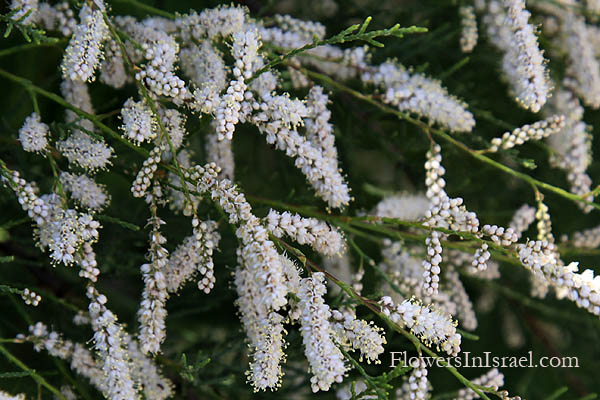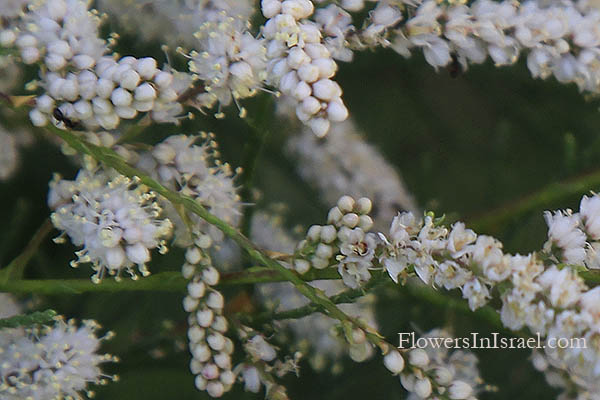طرفه، أثل ,אשל הירדן
| Scientific name: | Tamarix jordanis Boiss. | |
| Common name: | Jordan Tamarisk | |
| Hebrew name: | אשל הירדן | |
| Arabic name: | طرفه، أثل | |
| Family: | Tamaricaceae, אשליים |

Location: Hula Nature Reserve |
| Life form: | Tree | |
| Stems: | 3-6 meter high, brown-red bark | |
| Leaves: | Alternate, scale | |
| Flowers: | White | |
| Fruits / pods: | Capsule | |
| Flowering Period: | March, April, May, June, July, August | |
| Habitat: | Humid habitats | |
| Distribution: | Mediterranean Woodlands and Shrublands, Semi-steppe shrublands, Shrub-steppes, Deserts and extreme deserts | |
| Chorotype: | Mediterranean | |
| Summer shedding: | Perennating |

Location: Hula Nature Reserve Derivation of the botanical name: Tamarix, the Latin name for this plant derived from the Tamaris River in Spain. jordanis, Jordan. The Hebrew name:אשל, eshel, ʾḗšel, Akkadian: ašlu; Ugaritic: Eshel; Aramaic אַתְלָא, (atla); Arabic أَثْل (ʾaṯl).
No less than seven species of Tamarisk are found in Palestine, and several of them in great abundance." |